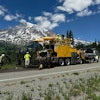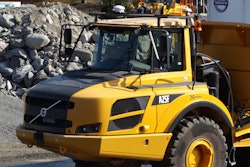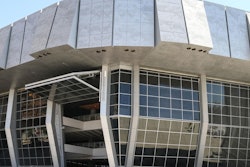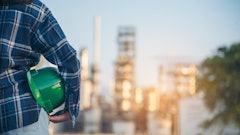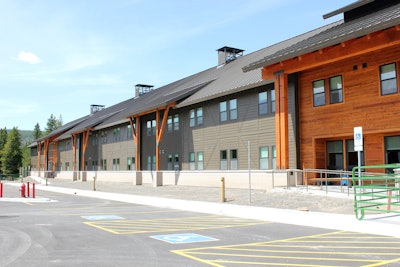
When our leaders established the National Park Service a century ago, the spirit of the law was to preserve and hold sacred the breathtaking and iconic views of our nation’s most precious natural resources. Today one of those parks, Yellowstone National Park, is tackling a new challenge to educate, engage and lead on sustainable building practices: seeking its first Living Building Challenge and LEEDv4 Platinum certified project. The collaboration and approach offers a number of lessons for the construction industry.
These “next generation” green building certifications go beyond reducing energy use and carbon footprints, moving design and construction forward by producing more renewable energy and promoting healthier people and communities; in other words, from “less bad” to “more good.” Green building now means considering the future of the whole building as well as its inhabitants – from net positive energy, to the sustainability of the materials used to create the building, to the health and wellness of its people:
Net Positive Impacts
This approach emphasizes renewable energy and innovative modes of energy storage, cradle-to-cradle building materials that eliminate landfill waste, and new strategies to green our grey water infrastructure.
Healthy People, Equitable Communities
Sustainable buildings have also now moved beyond the four walls of facility itself to focus on its inhabitants, by encouraging designs that promote access to natural views, daylight and healthy indoor air. The Living Building Challenge also requires verification that building suppliers are operating their own businesses in a socially responsible, equitable manner.
Material Transparency
Living Building Challenge and LEEDv4 certification both emphasize greater transparency in choosing products for the building. Labels such as Environmental Product Declarations (EPD) and Health Product Declarations (HPD) provide comprehensive information about a product’s environmental and material impacts. Many building owners are also seeking to avoid products that include ingredients known to pose risks to human health. These new considerations supplement today’s more common criteria for vetting “green” products, such as durability, energy efficiency and recyclability.
Andersen Corporation and Yellowstone share a common vision of a better future. Each generation of Andersen leadership has sought to enable a better world through environmental impact reductions, improvements and investments across the value chain – from the supply chain, to operations, products and the communities we live and work in. Andersen has demonstrated this most recently by signing the Ceres Climate Declaration, establishing our own goals to reduce energy, water, and solid waste by 20% by 2020, and honing product R&D focus to advance energy efficiency solutions for customers.
Equally important is how Andersen's collective efforts help increase access to green building solutions across all income levels. To-date, many people have assumed that sustainable building products are priced out of their reach. A whole-building approach to green building has driven technology advancements and more balanced financial models, which has made greener choices more accessible and cost-effective, even for affordable housing projects. Continuing to push the envelope to a net positive future helps increase access to all people who want to help combat the risks of climate change.
Andersen partnered with Yellowstone on green building projects around the park, including the first LEED Platinum building in the National Park Service – the Paintbrush Dormitory near Old Faithful. The company continues that commitment this year by participating in a collaborative effort to design and build the first Living Building Challenge and LEEDv4 Platinum project in the National Parks. This project, a rebuilt and expanded Youth Conservation Corps (YCC) Campus, will be home to hundreds of high school students who come to the park during the summer months to learn about conservation. Andersen has committed $1 million in funds and windows and doors for this important site that will help educate the next generation of sustainability leaders.
Yellowstone has shown how – with the right vision and collaborative partners – we can all set ambitious goals for a more sustainable future. Through its Yellowstone Environmental Stewardship (YES!) initiative, the park sought to reduce fossil fuel consumption by 18%, water consumption by 15%, and diverted 100% of solid waste from landfills. This next goal, achieving Living Building Challenge and LEEDv4 Platinum certification for the YCC, will serve as an important example for promoting the “more good” of sustainable buildings: educating and inspiring people, while meaningfully tackling the risks of climate change.
This is not just a lesson confined to our National Parks. As more companies and building owners embrace sustainability practices as part of their operating models, we will not only help preserve our natural environment, we will make buildings more inspiring, healthy and affordable.
About the Author: Eliza Clark is Director of Sustainability and Environmental at Andersen Corporation.



